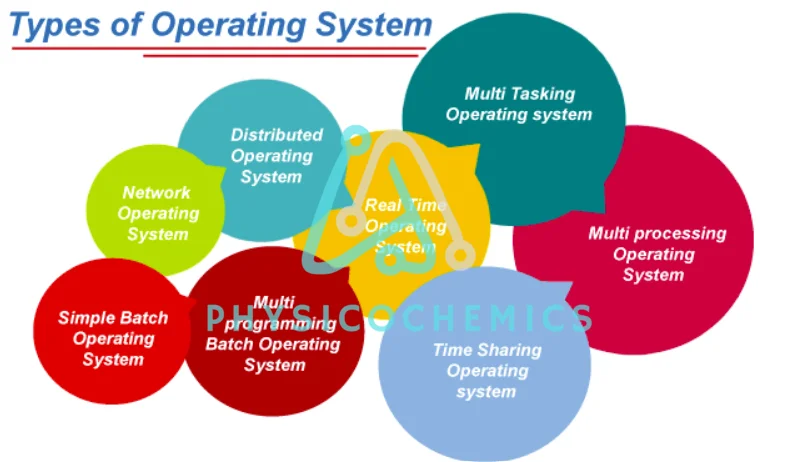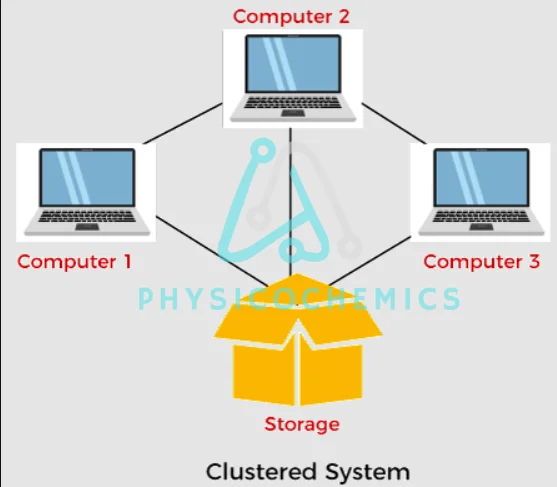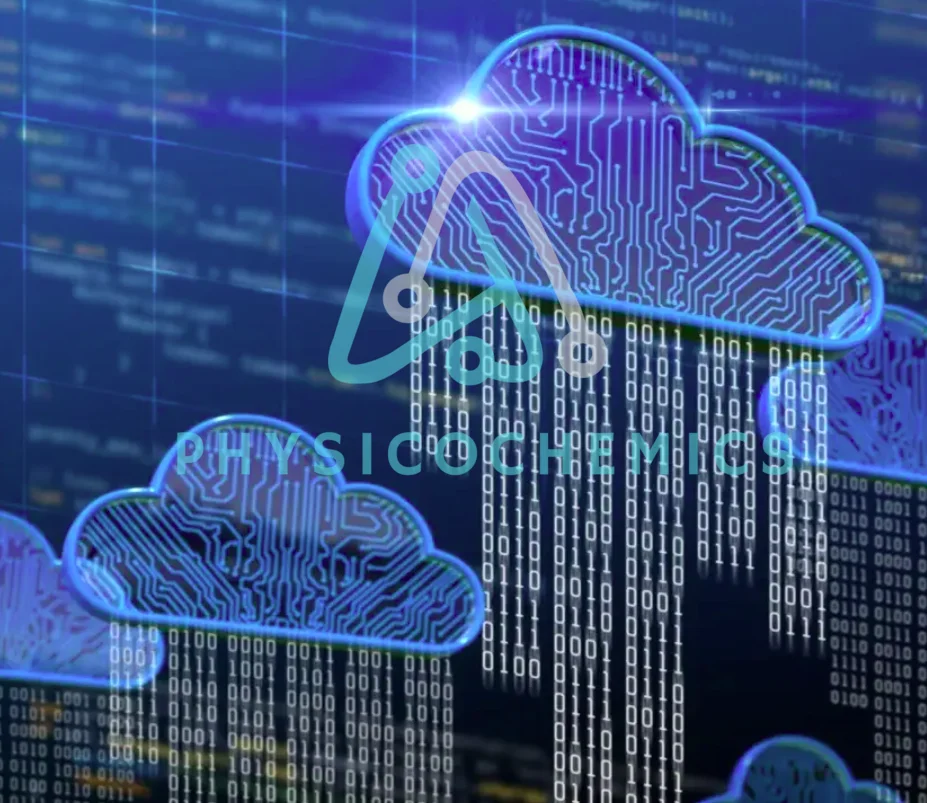Mainframe Operating System
Mainframe Operating System can be described in the following points:
- The CPU, memory, I/O, and storage resources of a mainframe computer are managed and controlled by mainframe operating systems, which are specialized software systems.
- With system administration and monitoring capabilities to guarantee high levels of dependability, availability, and security, mainframe operating systems offer a foundation for running applications and services.
- Mainframe operating systems frequently contain capabilities like clustering, virtualization, and partitioning to ensure adequate resource utilization and the flexibility to grow to meet changing demands.
- Mainframe operating systems have been widely utilized for decades in finance, government, and healthcare sectors but are waning in popularity elsewhere.
- Unisys MCP, IBM z/OS, and IBM z/VSE are examples of mainframe operating systems. Each Operating System (OS) has distinct features and capabilities suited to particular use cases and situations.
Definition of Mainframe Operating System
It can be defined as:
A mainframe operating system is a system that maintains and supervises the resources of mainframe computers like Hardware and Software. The distribution of system resources like the CPU, memory, I/O, and storage is known because of this operating system.
Definition

Types of Mainframe Operating Systems
There exist many types of Mainframe Operating Systems but some of the most important are as follows:

Centralized Mainframe Operating System
It is a mainframe operating system where a single mainframe computer maintains all processing and data storage. All users and applications are centralized on this one computer, giving them a single access point to all system resources like Hardware and Software.

Advantages
- Centralized mainframe systems are frequently utilized in large-scale enterprise computing settings, particularly in finance, government, and healthcare sectors, where high dependability, availability, and security standards are crucial. In these settings, centralized systems can offer centralized resource control and administration, enabling effective resource allocation and utilization.
- One of its main advantages is a centralized system’s capacity to offer a high level of availability and dependability. It is simpler to guarantee that resources are used efficiently and adequately because a single system handles all resources. Centralized systems might be constructed with redundancy and failover components to maximize uptime.
- Clustering, virtualization, and partitioning are common aspects of centralized operating systems that enable effective resource management and the capacity to scale to meet changing demands. Moreover, they might have specialized system administration and monitoring tools, such as security management and performance analysis tools.
Examples
IBM z/OS and IBM z/VSE are two examples of centralized operating systems. These operating systems offer a platform for centrally managing system resources, keeping tabs on system performance, and assuring system security. They also provide tools for running applications and services.
Distributed Mainframe Operating System
It is a mainframe operating system in which several mainframe computers are linked to share processing and data storage. Together, these computers constitute a distributed system with significant levels of scalability and redundancy.

Advantages
- Each computer in a distributed mainframe system could be in charge of a particular set of operations, such as processing, data storage, or networking. The computers may interact and exchange resources as necessary because a fast network links them.
- A distributed mainframe system’s capacity to offer a high level of scalability is one of its main advantages. Processing power and data storage capacity can be upgraded in the system by adding more mainframe computers to keep up with expanding needs. To maximize system uptime, distributed systems can also be designed with redundancy and failover techniques.
- Clustering, load balancing, and data replication are common characteristics of distributed mainframe systems that help assure high availability levels and effective resource use. They might also contain specialist system administration and monitoring tools, such as distributed system management tools and performance analysis tools.
Examples
IBM z/OS and IBM z/VM are two examples of distributed mainframe operating systems. With resource management, performance monitoring, and system security capabilities, these operating systems offer a framework for running distributed applications and services.
Clustered Mainframe Operating System
A Clustered Mainframe Operating System (CMOS) is developed for giant mainframe computers, where many processors collaborate to offer high-performance computational power.

Advantages
- When used in a clustered mainframe environment, several computers or processors are linked together to create a single system that can execute complicated applications and process enormous amounts of data.
- Because they are highly scalable, fault-tolerant, and dependable, clustered mainframe operating systems are perfect for running mission-critical applications that need constant availability and uninterrupted processing.
Examples
Oracle’s Real Application Clusters and IBM’s Parallel Sysplex are examples of clustered mainframe operating systems. High-performance computing and data processing is crucial to corporate operations in banking, healthcare, and manufacturing, where these systems are commonly employed.
Parallel Mainframe Operating System
It is a mainframe operating system in which giant mainframe computers with many processors, or CPUs, exist where each processor runs a different job or program simultaneously.

Advantages
- PMOS uses parallel processing, which enables the simultaneous execution of several tasks across various processors. Each lesson is broken down into a smaller subtask, and each subtask is given to a different processor to operate on simultaneously. With this strategy, the system can handle massive amounts of data and more quickly carry out complicated calculations than a single processor system.
- To maximize system performance, parallel mainframe operating systems are built to be highly scalable, fault-tolerant, and capable of dynamic resource allocation. They are perfect for performing large-scale applications, like transaction processing, data analysis, and scientific simulations, where processing speed and throughput are crucial.
Examples
IBM’s z/OS Parallel Sysplex enables many mainframes to operate as a single system. Fujitsu’s BS2000/OSD offers high scalability and availability for mission-critical applications, two examples of parallel mainframe operating systems.
Cloud-based Mainframe Operating System
It is a mainframe operating system in which function on mainframe machines hosted in the cloud instead of on-premises is made. This operating system is intended to give businesses flexible, on-demand access to mainframe computing power and resources without requiring them to make costly hardware and infrastructure investments.

Advantages
- To offer a scalable, economic, and highly available computing environment, CBMOS makes use of cloud computing technologies. Users can access the resources they require using a web-based interface or API, and the mainframe systems are housed in a data center. Cloud infrastructure makes it simple to scale computing resources because users may easily add capacity as needed.
- Because data is processed and stored in a secure data center with redundant systems and backup options, cloud-based mainframe operating systems also provide high levels of security and dependability. Organizations can also gain from the knowledge of cloud service providers who focus on mainframe technologies, which enables them to optimize their operations and lower the risk of performance problems and downtime.
Examples
Examples of cloud-based mainframe operating systems include LzLabs’ Software Defined Mainframe and IBM’s z/OS Cloud Broker, which let businesses migrate mainframe workloads to the cloud without having to rewrite any code.
Simple Batch System
Early computers were run from the console. The card readers and tape drives were input devices. Line printers, tape drives, and card punches were standard output devices. The user did not interact directly with a computer system. The user prepared a job that consisted of a program, data, and some control information (control cards). He then submitted it to the computer operator as punched cards.
The operating system was simple. Its primary job was to transfer control automatically from one job to the next. The operating system was permanently resident in memory. The operator grouped comparable jobs to expedite processing before entering them into the computer.
The CPU is often idle in this environment as the speed of I/O devices is much slower than the CPU. After some time, introducing a disk instead of a card reader resulted in faster I/O devices. In disk technology, the operating system keeps all jobs on a disk instead of the card reader. Job scheduling aids in the efficient use of resources and the completion of tasks. All jobs are on the disc, allowing for work schedules. A batch operating system is the VMS from Digital Equipment.
Multi-Programmed System
A group of jobs ready to be executed is called a job pool. Since more than one job can be achieved, the operating system can decide which job to implement next. That decision keeps CPU utilization as high as possible.
In general, a single user can only keep CPU or I/O devices busy sometimes. Multiprogramming allows the system to increase CPU utilization by ensuring the CPU always has a job to execute.
The CPU has a pool of jobs. The job that is now running is terminated when it has to wait (if it is doing any I/O). The CPU then chooses and executes a different position. This process ensures that the CPU consistently runs a job if there is a job to perform. In a non-multi-programmed system, if a job had to wait for an I/O operation, the CPU would also have to wait until I/O was finished.
CPU requires sophisticated data structures to implement multiprogramming. The CPU must determine the following job to be executed. Some jobs will fit into memory at once. Some positions may have to remain on disk. The operating system must be able to perform some scheduling on the jobs in the job pool. It determines which jobs will stay on the disk and which will be loaded into memory. Memory management must be a feature of the operating system. Memory management keeps track of which jobs are stored where and how much space is available.
Sometimes, many jobs can run at any one time. The interaction between jobs must be controlled. In general, one job should not be able to manipulate another job’s data or program code.
Time Sharing
In a batch system, the user cannot interact with the job when it is being executed. It means all possible problems must be anticipated beforehand, as the user cannot make corrections during execution. It becomes challenging when a program has to go through many phases, such as compilation, linking, etc. Defining what to do if a certain step fails may be challenging. Another problem is the debugging of a program. All debugging is static. The program’s inaccurate output at different points during execution is the only information to be discovered.
To increase the interactivity of computer systems, time-sharing was implemented. CPU is the most critical resource that is shared. Each job gets CPU for a small amount of time. When the allotted period for a job is used, the next job in line is allocated CPU.
The switching between jobs occurs very frequently. It enables user interaction with the job while it’s running. User interaction with running jobs should be made possible by the operating system. Most communication takes place on a keyboard. A prompt for the user to enter commands appears. To join relevant authorities, the user must know the job’s status. Often, a monitor is used to display a job’s output. Generally, the commands the user gives take very little time to execute. The control returns to the command line after finishing an order. It displays a prompt to indicate that the system is ready to run another command. DOS and Unix are examples of such systems.
Time Sharing Systems
A time-sharing system is a multi-user, multi-process and interactive system. It allows multiple users to share computers simultaneously. It is used when several users are linked to a single computer through communication networks. The computer first works on one user’s task for a fraction of the time. It then goes to the following user’s task. It is accomplished through time slicing. Each task gets a time slice in a round-robin fashion. The study continues until the time slice ends. The job stops when the given time slice is finished and waits for another time slice.
The computer operates very quickly and can distribute time slices to various tasks. The computer rapidly switches back and forth between different tasks. Time-sharing systems use CPU scheduling and multiprogramming to give users a small portion of the time-shared computer. The CPU can only be allocated to a job only if that job is currently in memory.
A time-sharing system is very complex. It is more complicated than a multi-programmed system. It must be able to have several jobs ready in memory simultaneously. It requires some form of memory management and protection. Positions must be swapped in and out in a reasonable time. It may be achieved by using virtual memory. Virtual memory is a technique that allows the execution of a job that may not be entirely in the memory. Unix, Linux, Windows NT Server, and Windows 2000 Server are examples of time-sharing systems.
FAQ’s
What language does Mainframe use?
Mainframes can run various operating systems and support multiple programming languages. Some commonly used programming languages for mainframes include COBOL, PL/I, Assembler, RPG, and Java. COBOL is likely the most widely used programming language on mainframes. Mainframes also support scripting languages like REXX and JCL (Job Control Language) for automating batch-processing tasks.
Who is the father of Mainframe?
Gene Amdahl is often called the “Father of Mainframe Computing.” He pioneered the development of mainframe computers and was an American computer developer. He was working for IBM in the 1950s. Amdahl made significant contributions to the development of mainframe computing, which helped pave the way for modern computing as we know it today.
What is the size of Mainframe?
A mainframe’s size varies depending on the model and configuration. Previously, mainframes were often large and required significant floor space, cooling, and power. However, modern mainframes are much more compact and efficient.
Overall, a mainframe’s size will depend on several variables, including the model, the organization’s needs, and the space and resources required for installation and maintenance.
What are 2 main differences between a mainframe and a PC?
A mainframe operating system is a system that maintains and supervises the resources of mainframe computers like Hardware and Software.
Whereas PCs are made for individual use and can only support a few users concurrently, mainframes are built to manage several users simultaneously, making them appropriate for usage in large enterprises.
Can a mainframe run Windows?
Yes, Although technically conceivable, it is not a frequent practice and may not be practical or cost-effective to run Windows on a mainframe.


